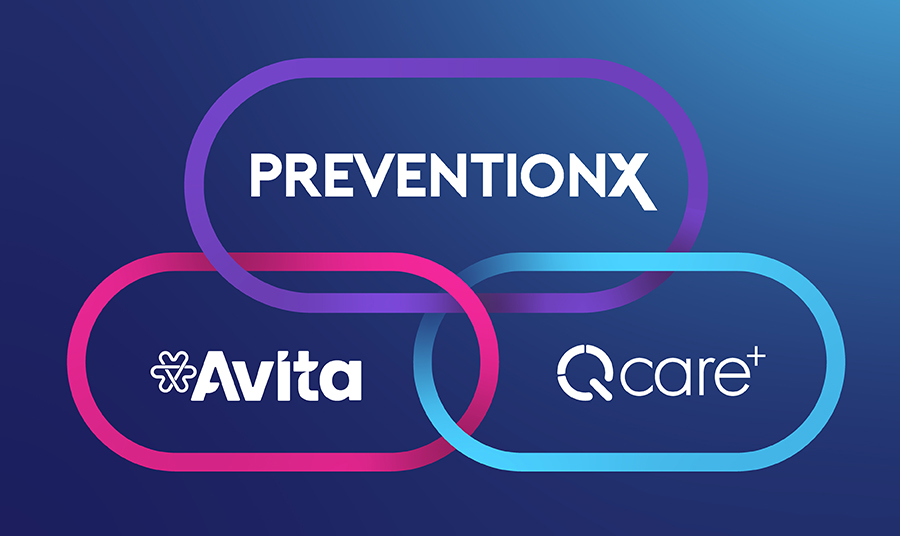While health leaders have touted the “whole health” approach of integrated healthcare for decades as a way to provide patients with better, more cost-effective care, the COVID-19 pandemic significantly accelerated the adoption and implementation of this model by prompting rapid expansions in telehealth and highlighting the importance of cross-functional collaboration of medical specialties.
In a changing 340B environment, why should covered entities leverage this model to secure their missions and better serve their communities? Dr. Jennifer Peña, medical director at Q Care Plus (an Avita Care Solutions company) and a former White House physician, explains below and includes actionable tips for entities at all stages of adopting integrated care.
To make sure we’re all on the same page in terms of definition, how would you describe an integrated healthcare model as it applies to covered entities?
Dr. Peña: An integrated healthcare model streamlines and optimizes the patient care journey by leveraging the ability of brick-and-mortar clinics, telehealth providers, onsite clinicians, and dedicated pharmacy teams to work with their covered entity partners to meet a shared goal of providing seamless and comprehensive care to patients.
By adopting this model, covered entities can enhance the overall quality, efficiency, and outcomes of their community care. Essential components of a successful integrated care model include care team collaboration, care coordination, interoperable health information systems, patient education and engagement, an emphasis on prevention and population health, a value-based approach, and increasing accessibility by incorporating technologies like telehealth.
By adopting an integrated healthcare model, covered entities can enhance the overall quality, efficiency, and outcomes of their community care.
Jennifer Peña, MD, FACP, AAHIVS
Medical Director, Q Care Plus
How does leveraging an integrated healthcare model offer covered entities a greater chance at sustainably fulfilling their missions?
Dr. Peña: By adopting an integrated healthcare model, covered entities have a greater chance of improving patient outcomes, optimizing their resources, focusing on prevention, embracing adaptability, aligning with value-based care, promoting healthcare equity, and fostering collaborative relationships.
Let me break the benefits of this model down into a few different buckets: financial, the patient journey, and provider efficiency and fulfillment:
From a financial standpoint, leveraging an integrated healthcare model can enhance the economic sustainability of covered entities participating in the 340B program by promoting economies of scale, centralizing management functions, ensuring compliance, leveraging data analytics, capturing more eligible prescriptions, collaborating with stakeholders, and expanding access to serve a larger patient population.
From a patient point of view, this model can enhance the overall patient experience by allowing for seamless coordination between different healthcare providers and settings and by allowing access to a unified health record that will give providers a comprehensive view of the patient’s history and promote personalized care. Integrated care also offers a broader range of services within the same network, which gives patients more choices. This, in turn, will lead to more engaged patients, improved shared decision-making, a stronger patient-provider relationship, and higher patient retention and adherence to prescription care plans.
From the outlook of care providers and professionals, the model vastly facilitates improved collaboration and communication among the care team, which leads to more effective and comprehensive care delivery. Administrative burdens and redundancies can be reduced. Centralizing patient data and workflows and automating systems saves time, allowing providers to spend more time on direct patient care. It also empowers providers to access comprehensive patient information quickly, improving diagnostic accuracy, reducing medical errors, and improving outcomes. Alleviating the administrative burden on providers can contribute to a better work-life balance and lower the risk of burnout. The integrated care model also allows providers to see the impact of their efforts across the entire patient journey. Witnessing positive outcomes and being part of a collaborative team can enhance job satisfaction and professional fulfillment.
Essential components of a successful integrated care model include care team collaboration, care coordination, interoperable health information systems, patient education and engagement, an emphasis on prevention and population health, a value-based approach, and increasing accessibility by incorporating technologies like telehealth.
Jennifer Peña, MD, FACP, AAHIVS
Medical Director, Q Care Plus
What do you say to covered entities that are nowhere near delivering an integrated care model yet, and may feel overwhelmed by the idea of taking it on?
Dr. Peña: First, I’d encourage them to recognize the complexity of this endeavor and take small steps. Identify specific areas where integration can make the most impact and start there. Other important considerations include:
- Seek collaboration with other healthcare entities, organizations, or established partners with experience in integrated care models. Partnerships can provide valuable insights, resources, and support to help you navigate integration complexities. If applicable, consider exploring 340B partnerships, as they can offer additional resources and expertise and enhance your ability to provide comprehensive and coordinated care, particularly if you serve a diverse patient population with complex healthcare needs.
- Conduct a thorough assessment of your patient population’s needs and your internal resources. Identify areas where integration can have the most significant impact on patient outcomes and satisfaction.
- Create a strategic plan for phased implementation. Break down the integration process into manageable stages, setting realistic timelines and goals. A step-by-step approach allows for better resource allocation, minimizing disruption to existing operations.
- Explore technology that can support integration efforts. Adopting electronic health records, telehealth platforms, and other digital tools can streamline communication, improve data sharing, and enhance efficiency.
- Invest in training programs for your teams to ensure they can navigate the changes associated with integrated care. Provide education on the benefits of collaboration and effective communication to foster a culture of teamwork.
- Regularly monitor the progress of your integration efforts and be prepared to adjust as needed. Solicit feedback from staff and patients to identify areas for improvement and optimization.
- Take time to celebrate milestones and achievements along the way. Recognize and reward your team’s efforts as they contribute to the successful implementation of integrated care. Positive reinforcement can help maintain motivation and momentum.
For covered entities just getting started with an integrated healthcare program, "Take small steps. Identify specific areas where integration can make the most impact and start there."
Jennifer Peña, MD, FACP, AAHIVS
Medical Director, Q Care Plus
Can you offer some insights on continuing best practices for covered entities that are already well on their way to successfully practicing an integrated care model?
Dr. Peña: Congratulations! Now it’s time to focus on regular assessments of the effectiveness of your integrated care model. Consider maximizing your efforts in the following 10 areas:
- Drive with data: Use performance metrics, patient outcome data, and provider and patient feedback to identify improvement areas.
- Join forces: Explore opportunities to expand collaborations and partnerships with other healthcare providers, community organizations, and stakeholders.
- Keep your tech sharp: Stay abreast of advancements in healthcare technology. Continuously evaluate and adopt new tools and platforms that support integrated care, such as advanced electronic health record (EHR) systems, telehealth solutions, and interoperable technologies that facilitate seamless data exchange.
- Put team development on a pedestal: Prioritize ongoing training and development for your healthcare professionals.
- Give patients skin in the game: Enhance patient engagement strategies to actively involve patients in their care. Leverage patient portals, education materials, and communication tools to empower individuals to participate in shared decision-making and self-management of their health.
- Strengthen population health management strategies: Use data analytics to identify high-risk patient populations, implement targeted interventions, and proactively manage chronic conditions. Population health initiatives contribute to better health outcomes and cost-effective care delivery.
- Reinforce the importance of team-based care: Encourage collaboration among healthcare professionals, including physicians, nurses, case managers, pharmacists, and other support staff within your organization.
- Foster patient-centric communication: Ensure all members of the healthcare team have the tools they need to communicate effectively with patients, including the ability to provide clear information, address concerns, and involve patients in decision-making.
- Prioritize data security and privacy: Because integrated care relies on sharing sensitive patient information, it’s crucial to maintain robust cybersecurity measures and adhere to regulatory requirements.
- Get the word on the street: Engage in community outreach and education initiatives. Raise awareness about the benefits of integrated care within the communities you serve.
This article originally ran in 340B Report.



